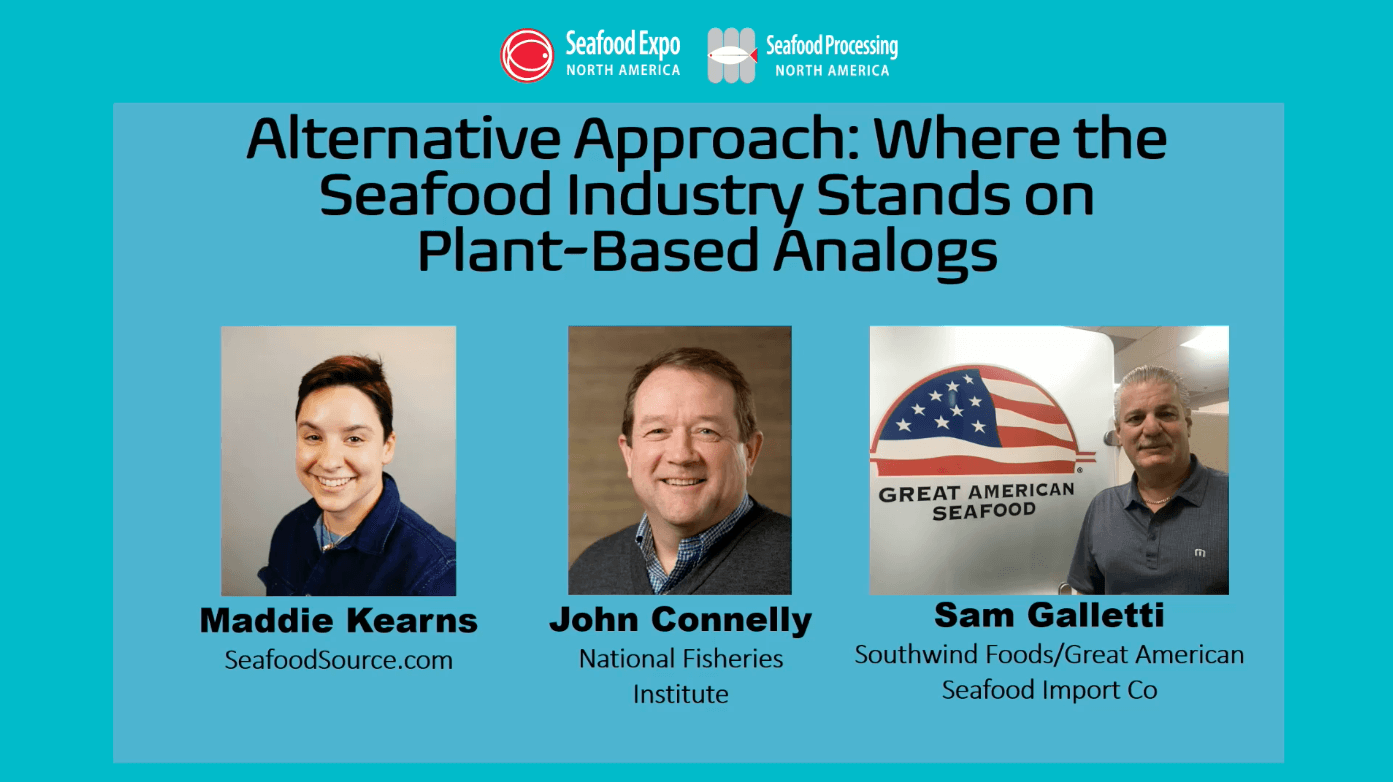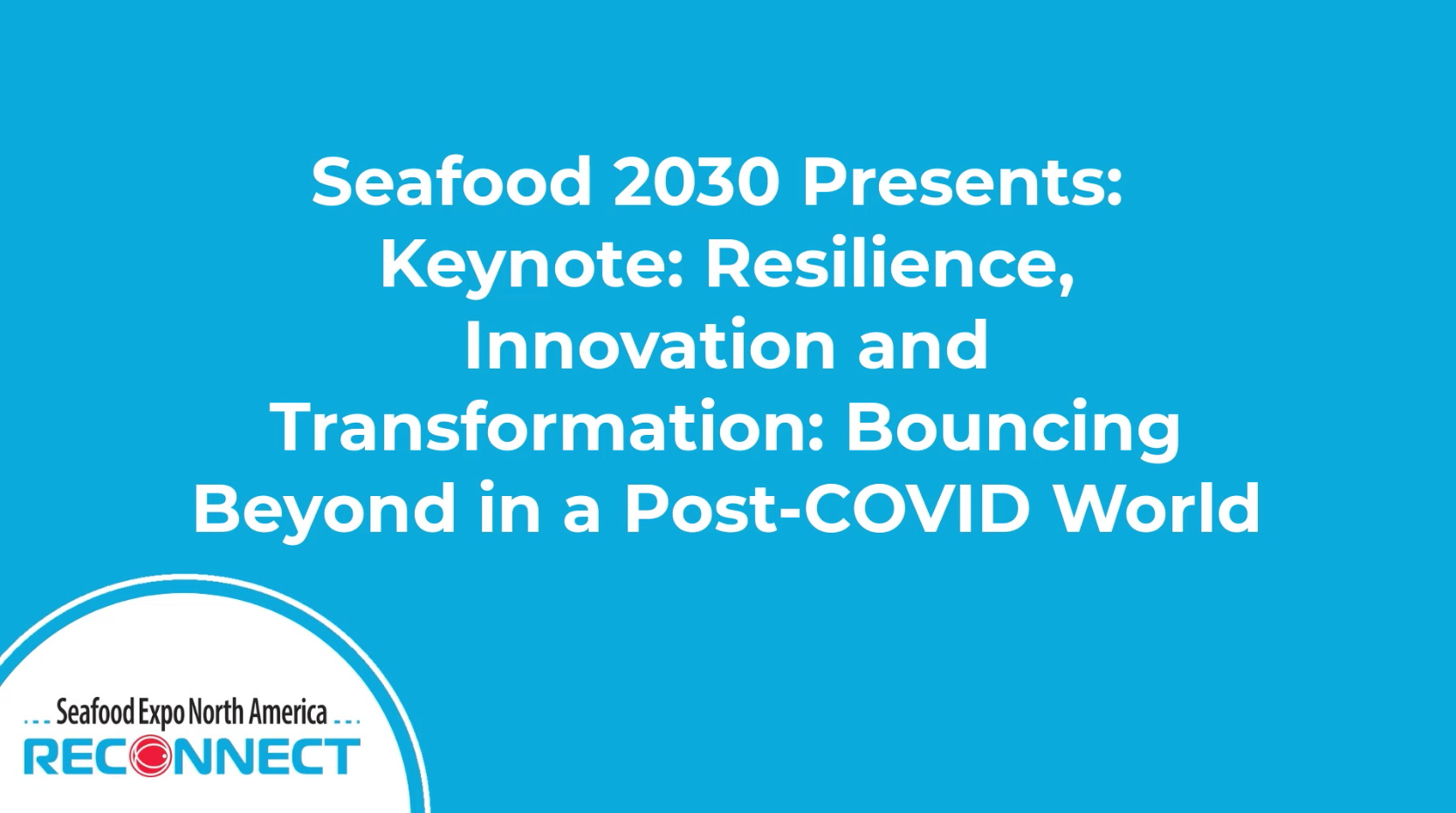Filters
Product Categories
Peterson has 20-plus years of experience in consumer-goods marketing with Gorton’s of Gloucester, where she played a big role in the launch of several new seafood products and lines and Nicholson knows a thing or two about seafood innovation — since 2009, his company has captured four top prizes at two new product competitions — the International Boston Seafood Show’s Seafood Excellence Awards and the European Seafood Exposition’s Seafood Prix d’Elite.

Moderator: Maddie Kearns, SeafoodSource.com
Panelists:
John Connelly, National Fisheries Institute NFI
Sam Galetti, Southwind Foods/Great American Seafood Import Co
Plant-based seafood analog products are proliferating in North America and globally. Some traditional seafood suppliers have looked upon the emerging product segment as an opportunity for new growth, while others in the industry remain skeptical of its classification and positioning in the marketplace. This panel session explores these various viewpoints, from seafood suppliers stepping into plant-based analog product development themselves to those partnering with alternative protein food-makers. How might seafood and plant-based alternatives coexist? Where do the categories connect, and where do they diverge? What kind of labeling is needed for this analog?

Seafood processors are a study in efficiency when producing fillets from raw fish, but "extra" parts such as skin, organs and other body parts are discarded as waste far too quickly. In this webinar, we'll explore what uses exist for these parts, and the opportunities for revenue they offer.

Maine Lobster: A Variety of Products for Any Culinary Occasion

The Strategy Behind Sustainable Seafood Philanthropy – A Briefing for Industry from the Packard and Walton Family Foundations

Reframing the Sustainable Seafood Narrative by Shifting to a "Whole Chain" Perspective

With a growing e-commerce world, some seafood dealers have found lucrative opportunities through popular online retail portals. In this webinar, we'll hear how one seafood dealer managed to extend its reach using a major logistics company to carry its products to a whole new set of customers.

Recovery is well under way from ISA in Chile, and we seem to be turning the corner on EMS in Southeast Asia, but what about the next big biological catastrophe that may be waiting in the wings? Even though we may not yet know what that may be, there’s a surprising amount you can do now to prepare for the next epidemic, and the advice follows guidance on sustainable aquaculture that has been around for some time. In this webinar, we’ll discuss what you can do to plan ahead.

Information management in seafood has become more multimedial to accommodate rapid advancements in the technology sector. Spreadsheets and PDFs are no longer enough - the appeal of complementary media, like digital images, is on the rise and it is influencing industry purchasing decisions like never before. How can seafood sellers best keep tabs on image data and leverage it to enhance operations and sales? Join SeafoodSource and José Castro Fuentes, Director of CYRSE, to explore the power of sharing and archiving images in the seafood realm.

Speakers: Sarah Hogan, Program Officer - David & Lucile Packard Foundation; Teresa Ish, Senior Program Officer, Environment Program - Walton Family Foundation; Eduard Müller, President - University for International Cooperation in Costa Rica; Per Olsson, Researcher - Stockholm Resilience Centre; Steve Waddell, Lead – Bounce Beyond
Session Description: “COVID-19 has been a fire-drill to test the resilience of our systems” according to Eduard Muller, President of the University for International Cooperation. The last year has brought a renewed focus on the resilience and transformation of everything from supply chains to economic systems to technology and networks. But years of research before COVID-19 has greatly improved our understanding of resilience and processes of transformation. This session’s panel is made up of three experts in the field who share their understanding of what makes systems resilient and how the seafood industry can better prepare their systems for future disruption and opportunity.
